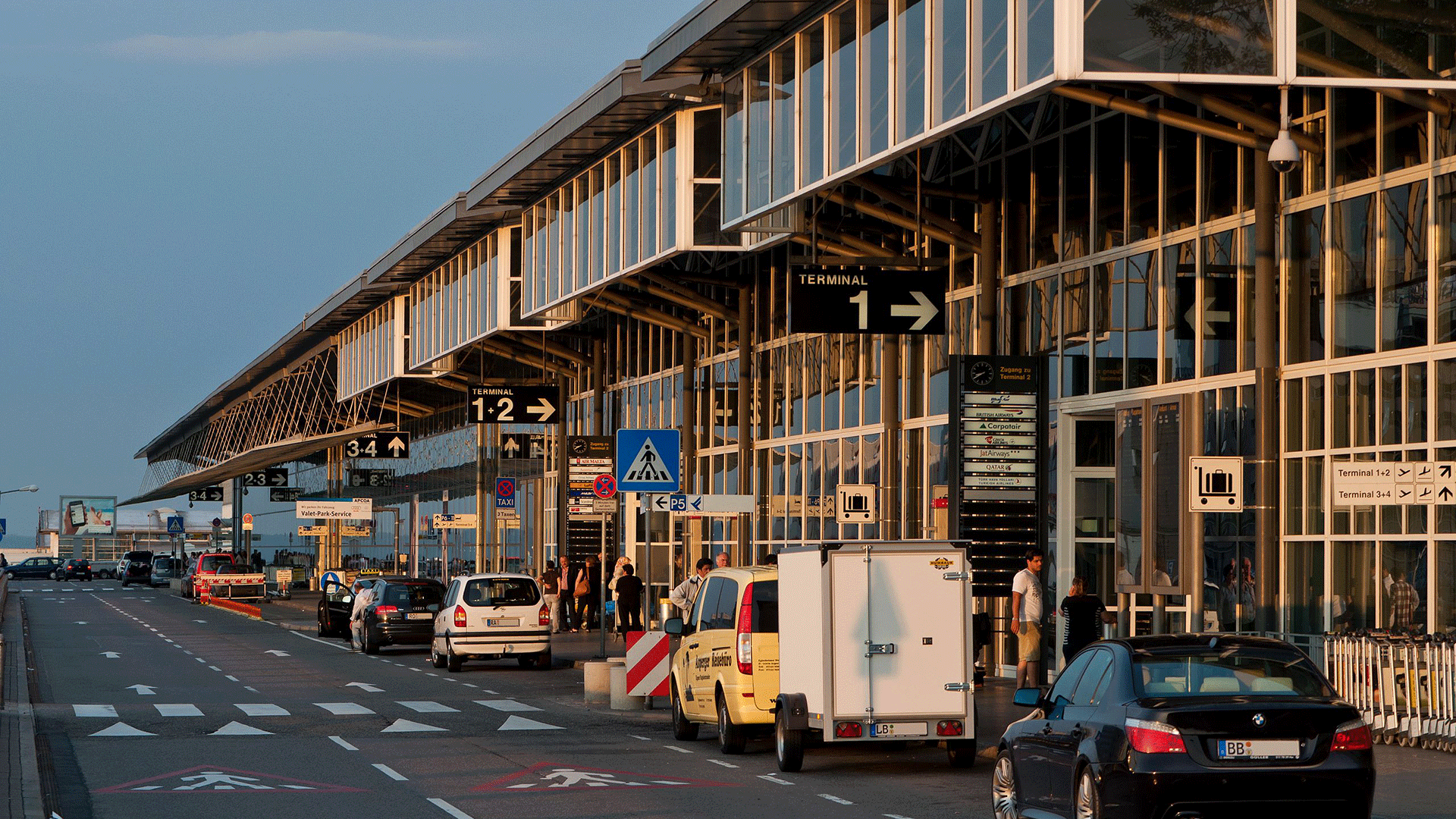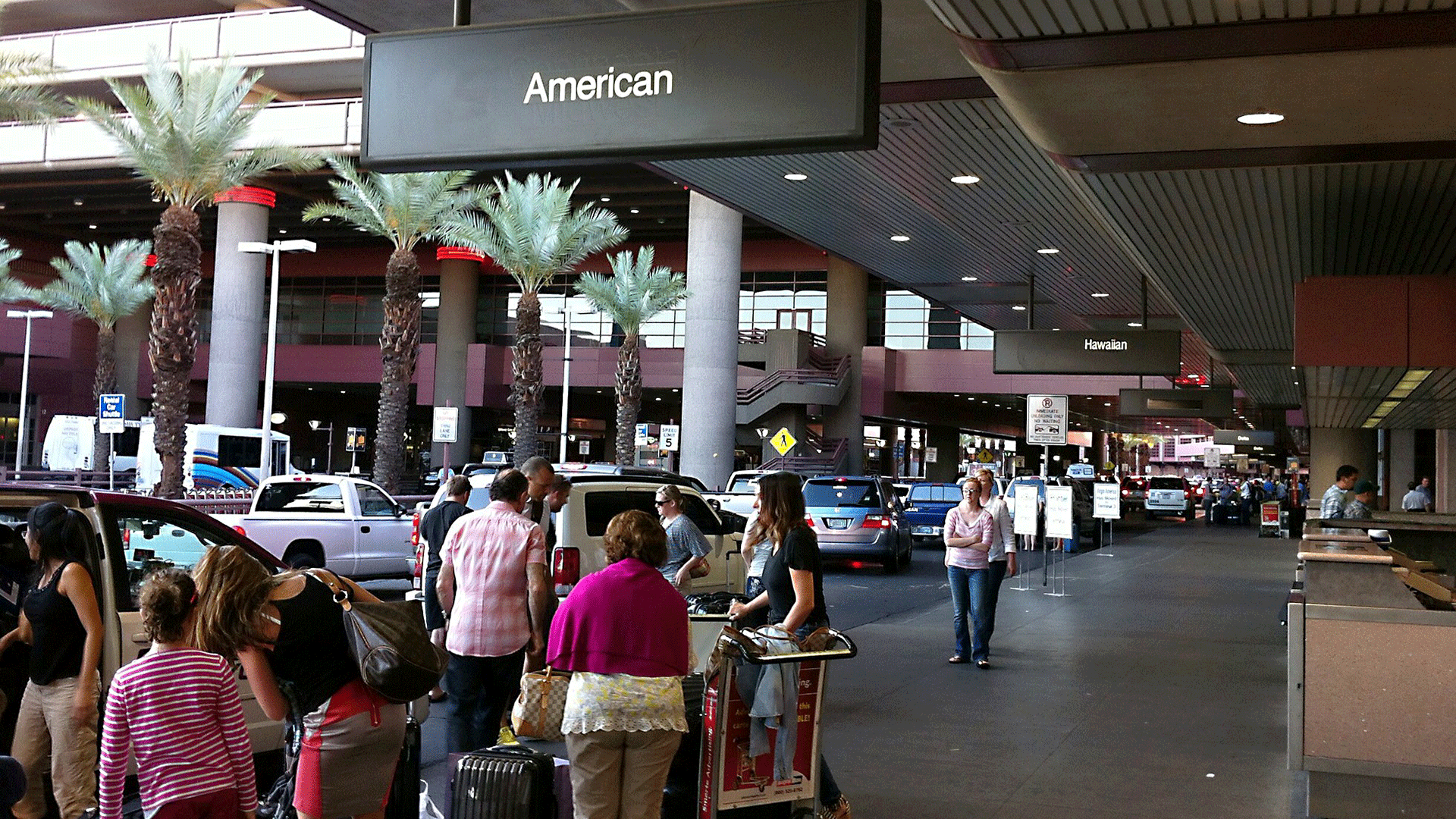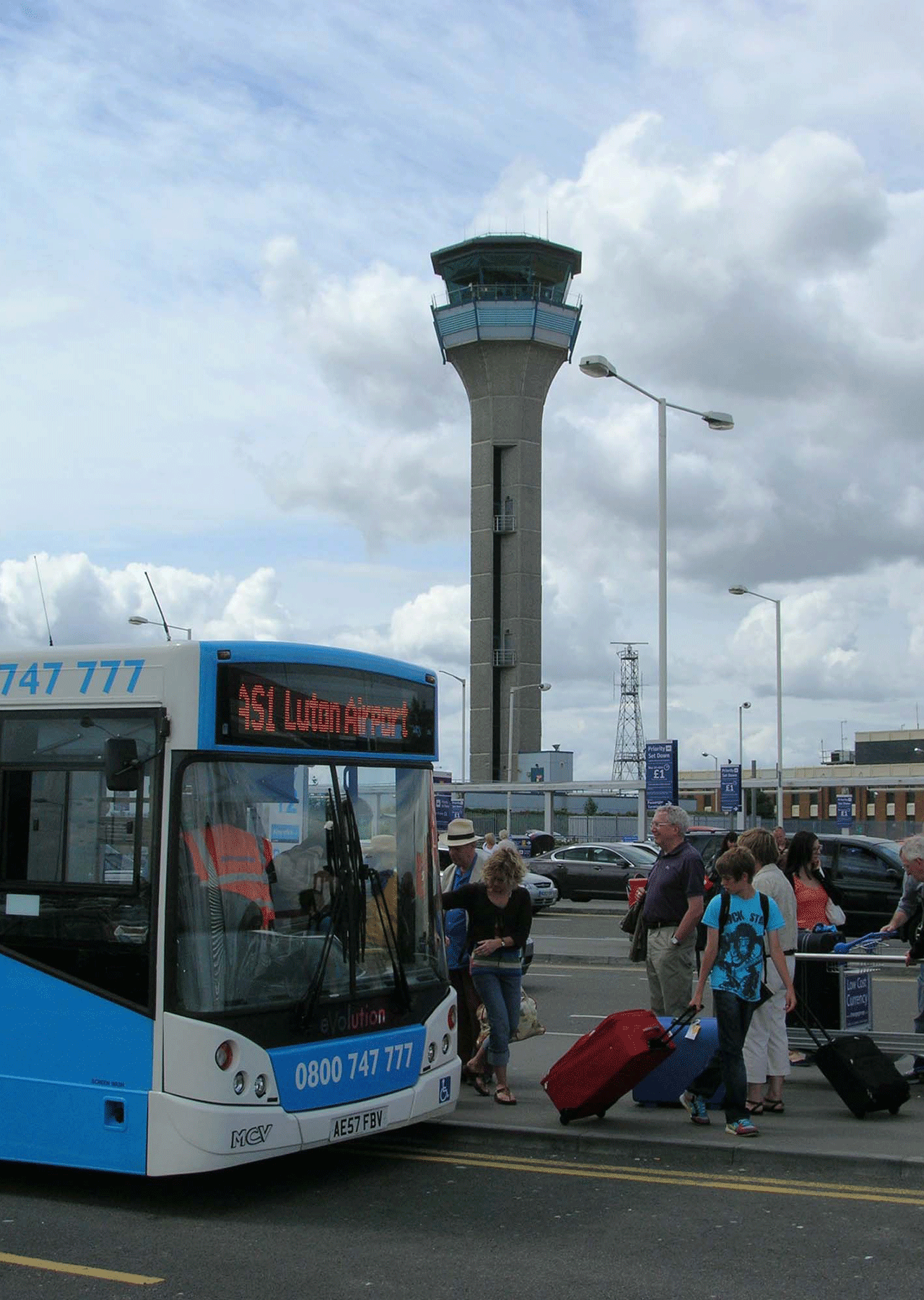April 19, 2023
Although one of the central purposes of transportation planning is to design networks that facilitate connections between people, the ironic truth is that the human behaviors that make up these connections are difficult to measure and plan for. The intangibles of human connection can be especially confounding when it comes to curbside pickup/drop-off zones, which often act as the stage upon which deliveries, moves, reunions, and partings play out. Stuttgart Airport, in Germany, allots travelers eight minutes for a heartfelt goodbye at its curbside Kiss & Fly Zone. (Kissing into the ninth minute will incur fees.) How can we design curbside spaces that can host this highly variable human behavior?
Here at Kittelson, this question has driven our interest in all the curbside management work we do-from reallocating road space for ridesharing services to capturing and predicting parking occupancy at the curb. Recently, however, the airport pickup/drop-off zone has captured our attention for its unique needs and opportunities. We’ve been fascinated by the way these specific spaces both encapsulate the difficulties of curbside management and offer fresh opportunities to chart a new path in design.

Terminals at the Stuttgart Airport, which allots travelers eight minutes for a heartfelt goodbye at its curbside Kiss & Fly Zone. Photo credit: Julian Herzog, Wikimedia Commons.
What Makes Airport Pickup/Drop Off Zones So Tricky?
Although airports are a fixture of our increasingly globalized world, their variability of scope and service complicates the decision-making around their pickup/drop-off zones. Not only do different airports serve vastly different volumes of passengers, but they also entertain eclectic vehicle mixes that include passenger vehicles, ridesharing vehicles, and hotel shuttles. To make matters more complicated, airports must also juggle dual roles as public utility and revenue stream for the owner agency, and their allocation of curb space must advance both purposes.
This expectation-that the airport curb must balance as many different functions as a Swiss army knife-gestures at why curbside management is so difficult to get right, and why planners have historically responded retroactively to curbside problems instead of anticipating them in the design phase. Given the importance of context and the high variability between sites, airport curbside management has historically been piecemeal and retrofitted, such as the development of cellphone lots for drivers picking up arriving passengers, or PIN-code systems to match passengers with their rideshare vehicle more quickly.
But this reactive strategy leaves airports constantly playing catch up, both to the basic needs of passengers and to the consistent march of technological progress. Read on to learn about two projects that we believe can help airports change how they approach curbside management by empowering them to understand their own site-specific needs and capacity.

Airport pickup/drop-off zones balance about as many different functions as a Swiss army knife. Photo credit: Grant Wickes, Flickr.
Project 1: Airport Curbside and Terminal Area Roadway Operations (ACRP)
In collaboration with InterVISTAS, we contributed to a forthcoming update of to the Transportation Research Board’s Airport Cooperative Research Program (ACRP) Report 40: Airport Curbside and Terminal Area Roadway Operations. Originally published in 2010, this update will offer a refresh of best practices for airport curbside management.
Working as the update’s prime consultant, InterVISTAS developed regression models to estimate the capacity of various lane configurations in the airport’s terminal curbside areas. Using these models, an airport can discover the capacity of its existing curbside configuration, and test how reallocating curb space or how changes in the vehicle mix would affect capacity. We designed the Quick Analysis Tool for Airport Roadways (QATAR) spreadsheet to implement InterVISTAS’ models, using inputs such as the average time stopped for each vehicle type using the curb, the curb length of each loading/unloading zone, and the volume of each type of vehicle using each zone.
Because each airport is different, our spreadsheet tool allows airport planners to customize the terminal area layout and default inputs to match their conditions. Our spreadsheet tool is meant to provide airports with a framework they can use to customize a curbside management strategy that fits their needs and user patterns.
Project 2: Transit Capacity and Quality of Service Manual (TCQSM)
 Public transit and privately operated charter buses frequently are also users of airport pickup/drop-off areas, and typically have their own dedicated loading zones. QATAR is also capable of modeling these areas, but our work on all three editions of the Transit Capacity and Quality of Service Manual (TCQSM) offers insights into ways that the capacity of curbside pickup/drop-off areas can be estimated more generally.
Public transit and privately operated charter buses frequently are also users of airport pickup/drop-off areas, and typically have their own dedicated loading zones. QATAR is also capable of modeling these areas, but our work on all three editions of the Transit Capacity and Quality of Service Manual (TCQSM) offers insights into ways that the capacity of curbside pickup/drop-off areas can be estimated more generally.
Using inputs such as number of vehicles stopped per hour, average time spent stopped, the variability of this time, and potential delay re-entering traffic from the curb, the TCQSM provides equations that help users estimate how many loading areas (vehicle stopping positions) are needed to serve that demand. Although originally designed with public transit buses in mind, the TCQSM’s principles are equally applicable to ridesharing pickup/drop-off, package and food deliveries, and other applications.
Image caption: a bus drops off passengers at Luton Airport in Great Britain. Photo credit: David P Howard, Wikimedia Commons.
4 Lessons about the Design of Pickup/Drop-Off Zones
Although all transportation design is informed by human nature, the curb represents a space where design literally abuts the flurry of everyday activity; and where human emotion intersects with operational, logistical, and accessibility demands. We’re excited to put the experience from past curbside management projects to use on future design and layout projects. Here are some of the key takeaways we’ve learned so far:
1. Forging ahead in curbside management means remaining cognizant of its unique challenges. Curbside management design does not-and probably never will-have a silver bullet. As we see from airports alone, the unique context surrounding the curb will always inform its uses and needs. But there are certain principles that can guide the decision-making process for designing pickup/drop-off zones.
2. Rely on design values that naturally align with the needs of curb space. One such principle is complete streets. In the best cases, the philosophy and curbside design will have a symbiotic relationship, with the values of complete streets informing a safe and holistic curbside design, which then provides a space that privileges all users’ safety and mobility.
NCHRP Research Report 1036: Roadway Cross Section Reallocation: A Guide, authored by a Kittelson-led team and currently available in pre-publication form, offers two main lessons for how to design curb space (or repurpose existing curb space). First, focus on design and policy choices that make roadways safer, including traffic-calming measures and dedicated spaces for vulnerable users. Second, a street is only “complete” when it harmonizes the needs of different stakeholders. Designing the curb with all users in mind will also help practitioners to break out of relying on the reactionary measures that have long characterized curbside management strategy.
3. Tools are essential–but simulators will give a more robust picture of what’s right for each site. Beyond enshrining the values of the Complete Streets approach in the design process, we hope to continue to pioneer planning-level methods like QATAR and the TCQSM. While perfect standardization in design isn’t possible or desirable in this case, these methods draw upon available research to bring a measure of uniformity and consistency to what will remain an imperfect science.
Increasingly, our work on these curbside management projects has shown us that tools like the ones we’ve described in this article are often complemented by the use of simulation tools. While a planning-level equation can land users in the ballpark of their design needs, simulation tools like VISSIM (which we’ve used primarily to test intersection configurations, but which InterVISTAS has used to model airport activity) allow for a more dynamic understanding of how human users (and human variability) actually effect a design’s operations.
4. Airport curbside management offers opportunity for innovation. The curbside spaces at airports, not despite their idiosyncrasies but because of them, can act as incubators to develop design strategies that better integrate emerging technologies. Airport pickup/drop-off zones represent a more consolidated and simplified pedestrian system-there’s no need to incorporate bicycle lanes, for instance-and because of this, they can function as useful spaces to pilot new technologies, like AV self-valeting.
We’re excited to continue growing and learning about curbside management, and to work with clients to find a solution that suits the unique needs of their sites and their users. Feel free to reach out to discuss any of these ideas further!
